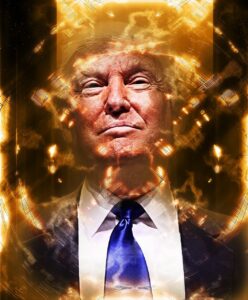While the crypto community eagerly awaited Donald Trump to fulfil his much-anticipated campaign promise of creating a Bitcoin strategic reserve, the President’s latest executive order introduced a broader yet significant shift in the US approach to cryptocurrency. Once a sceptic, Trump has made a remarkable pivot in his second term, embracing digital assets and committing to their advancement. His pledges to preserve the government’s Bitcoin holdings and establish a strategic reserve energised Bitcoin enthusiasts. However, the unveiled “national digital asset stockpile” has tempered expectations by focusing on various cryptocurrencies instead of Bitcoin alone, an asset many see as unmatched in value and potential.

Digital Asset Stockpile: A Broader Vision
The executive order outlines the establishment of a digital asset stockpile, encompassing cryptocurrencies obtained through lawful federal enforcement actions. Previously, agencies like the US Marshals Service auctioned seized Bitcoin and other digital currencies. Now, the government aims to retain these assets, signalling their strategic importance.
However, the move diverges from Trump’s earlier promise of a Bitcoin-specific reserve. Bitcoin advocates argue its decentralised and immutable nature makes it the ideal—and sole—candidate for such an initiative. The inclusion of other cryptocurrencies has sparked debate, with some viewing this broader approach as a dilution of Bitcoin’s unique potential. Enthusiasts had hoped for a more Bitcoin-focused strategy to position it as the cornerstone of the US digital asset framework.
Defending Blockchain Freedom
The order also introduces critical protections for blockchain developers and miners, safeguarding their rights to innovate, deploy software, and validate networks without fear of legal or regulatory pushback. This really is a pivotal step in securing the decentralised ecosystem underpinning Bitcoin, supporting its ongoing growth and resilience.
 Additionally, the administration has boldly pledged to protect individuals’ rights to self-custody digital assets. By empowering users to control their wealth without relying on centralised exchanges, the government aligns itself with the decentralisation ethos that defines Bitcoin and blockchain technology.
Additionally, the administration has boldly pledged to protect individuals’ rights to self-custody digital assets. By empowering users to control their wealth without relying on centralised exchanges, the government aligns itself with the decentralisation ethos that defines Bitcoin and blockchain technology.
Stablecoins and Dollar Sovereignty
The executive order also prioritises dollar-backed stablecoins to bolster the global dominance of the US dollar. While this initiative benefits the national economy, it contrasts with Bitcoin’s decentralised nature. Stablecoins may offer short-term utility, but Bitcoin stands unmatched as a global, non-sovereign store of value.
Hope for a Bitcoin-Centric Future
Although this executive order marks progress, it has left Bitcoin advocates wanting more. The broader focus on multiple cryptocurrencies waters down the vision of a Bitcoin strategic reserve. However, with Trump’s pro-crypto stance, there’s hope future policies will fully realise Bitcoin’s potential. For now, the order lays the groundwork, and Bitcoin supporters remain optimistic that its time as the ultimate store of value is on the horizon.
